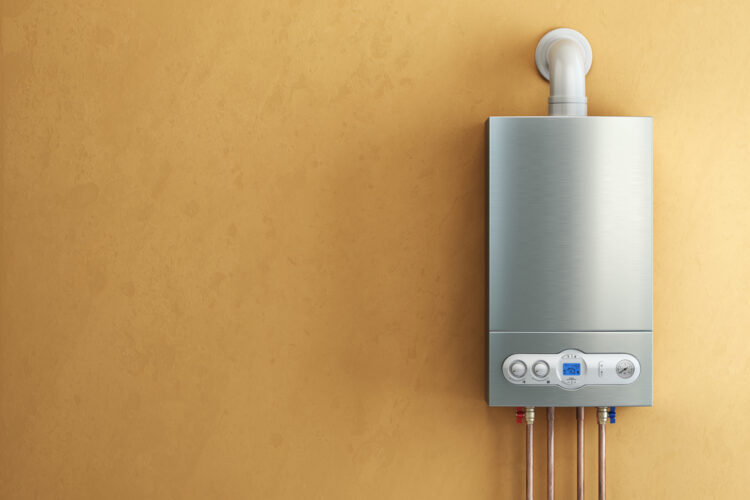When it comes to the construction of a new house, safety is key.
When it comes to sensitive materials like gas and electricity, you have to be aware.
Both gas and electricity can be dangerous if not handled properly.
And, if the lines are left too close, any issue with one can be detrimental to the other.
What should be the distance between the gas line and the electrical circuit?
The minimum distance between your gas line and the electric circuit must be 25 mm. Keep in mind that the distance might depend on some factors. These include the circuit type, cables’ strength, and the risk from these appliances.
This article will discuss the placement of electric outlets and gas lines. Let’s begin!
The Ideal Distance Between Gas Line and Electrical Outlet

In the case of the distance between gas lines and electrical factors, some things need to be kept in check. While keeping them beside each other doesn’t risk any immediate accident, maintaining safety is important.
Authorities set some minimum distances based on the type of electric line. However, keep in mind that these numbers can differ in different regions. These include-
Between Gas Lines and Electric Meters
Electric meters are very electricity-intensive and require a lot of concern. Unless you’re careful around them, there’s always a risk of accidents. And any issues with the electric meter paired with a gas line in proximity can be disastrous.
To reduce the possibility of accidents, you can install gas pipes underground to avoid problems. The gas pipe will need protective layers if kept underground but will increase overall safety.
Keep a distance of at least 3 feet (914.4mm) between the electric meter and any gas line. This is very important if there’s a risk of your system using too much power. In the case of power-intensive mechanisms linking a 15 amp switch in a 20 amp circuit, there’s a risk of accidents. So, you have to keep your distance in mind.
Between Gas Meters and Electric Circuits
Just like electric meters, gas meters are pretty scary as well. A faulty gas meter can damage your system if taken care of properly. So, the distance between them must be taken into account.
In case your electric circuits are well-made and have sufficient protection. You still have to keep them at least 150mm from each other. Electric control, switchboards, and sockets, consumer appliances all fall under these rules.
Between Electric Cables and Gas Lines
Both electric cables and gas lines are pretty harmless on their own. Most of the time they’re well-sheathed and protected to prevent any accidents or leaks. Still, it’s better to be safe than sorry.
We advise that you maintain a minimum distance of 25mm between the appliances. However, if you have problems like common wire getting hot, you might want to keep the distance higher.
In certain scenarios, keeping your electric lines separate might be hard. In that case, make sure they’re as far as possible. Also, ensure proper insulation and sheathing to prevent any damage.
Things to Keep in Mind Before Placing Your Gas Line and Electric Circuits
Now that we’ve discussed the required distance, it’s also essential to keep a few things in mind. These are important safety factors that every homeowner should keep in check. Compromising these can be lethal.
Choose the Right Materials
Both electric wires and gas lines are very volatile. Any negligence can damage them drastically, amplifying the risk of accidents. So, you have to make sure the material is sturdy and safe.
When it comes to gas, select materials carefully as well, although copper wires are standard, they’re very risky. For this reason, we recommend using materials like galvanized steel or CSST along with copper.
Using suitable materials can protect you from many electric safety hazards. So, if you’re wondering which pipes will be better, try checking our recommendations:
| Product 1 | |
| Product 2 |
These are some of the best products out there! Check their reviews for more!
There might be some regulations in your area regarding these materials. Be careful and follow the rules correctly!
Prevent Obstructions
The worst enemy for your wires and gas pipes is obstructions. Although the pipes and wires are pretty malleable, they are also susceptible to damage. If there are sharp corners or edges, make sure you plan for the first.
Bending them too much can damage the wires beyond repair. Thus, increasing the risk of leaks and breaks. Also, ensure there aren’t any sharp objects around the wires that can cause them to break.
Moisture is another critical issue. Protect your wires if you have water dripping in your ductwork or anywhere else.
Use Expert Advice Whenever Necessary
Both gas and electricity are very volatile and need to be taken seriously. Any accident involving them could be detrimental. So, if you notice anything troublesome, always reach out for help.
Fix them immediately, whether that’s a leaking pipe or a broken wire. However, we recommend always calling for an electrician or plumber.
With that, we are done with our discussion about the distance between gas and electric lines!
FAQs
What is the standard distance between electrical outlets?
Regarding electrical outlets, the US national electrical code recommends a distance of six feet. The distance must be measured along the floor line for accuracy.
What is the proper height for electrical outlets?
Generally, placing your outlets at 12 inches is better. This makes everything accessible and easy to connect.
What is the standard amperage for a standard outlet?
Generally, the standard amperage is between 15-20 amperes for US homes. 15 amps are used for smaller appliances, and 20 amps are used for larger ones.